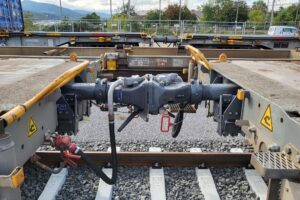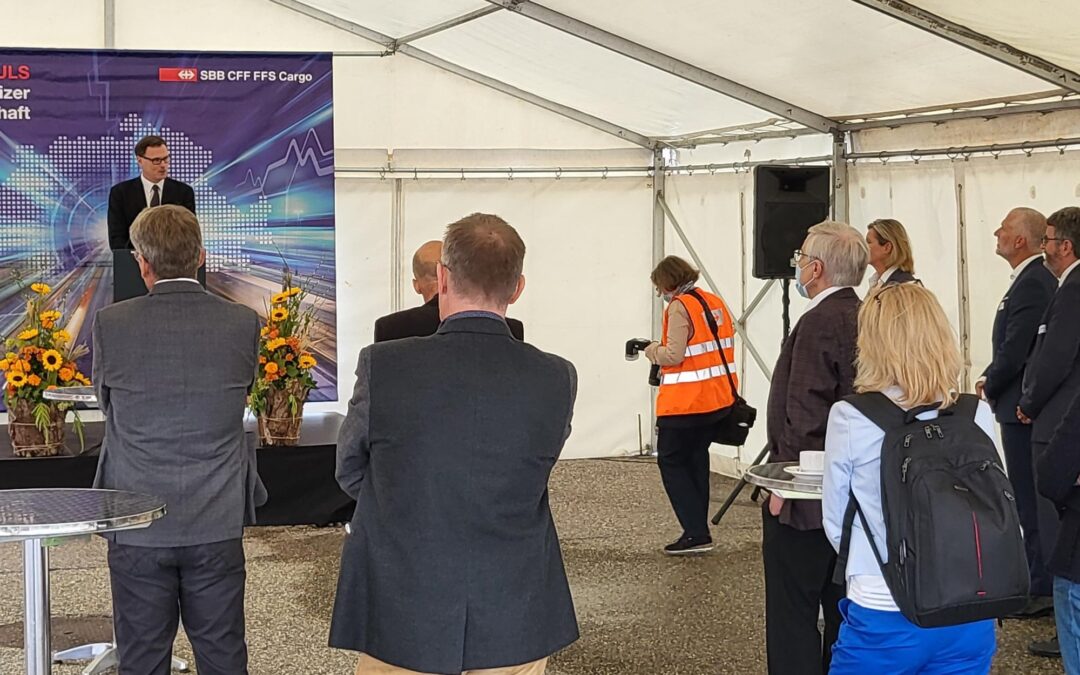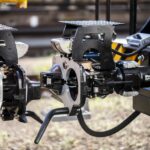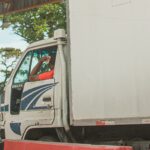Together with the Federal Office of Transport (FOT) and the Association of Public Transport (VÖV), the VAP Association of the Loading Industry has signed a declaration of intent to automate Swiss rail freight transport. The long-term major project will start on 1 October 2021 with the preparation and implementation of the migration of the screw coupler to the digital automatic coupler (DAK).
Transport policy fundamentals
Rail freight transport should become more productive and competitive, increase its market share in overall logistics and thereby strengthen the shift policy and the federal government’s 2050 climate protection goals. VAP President and Member of the Council of States Josef Dittli has provided the impetus for an implementation and financing concept for the automation and digitalisation of rail freight transport with his motion 20.3221 “Transporting goods more efficiently by rail through automation”. Parliament has already approved the motion.
Bringing all market participants to the table
Now the FOT, with the support of VöV and VAP, is working out the basics for the executive. On this basis, the Federal Council and Parliament can decide on the migration to DAK. The VAP represents the needs of the economy. The industry wants to make sustainable use of multimodal transport with freight or container transhipment between the modes of transport according to their strengths. To achieve this, all market participants must be involved. These include not only those responsible for goods such as chemicals, paper, pulp and wood products, cars, consumer goods, food or building materials, but also the corresponding means of transport such as freight wagons.
As a reminder: of 600,000 freight wagons in Europe, 220,000 are privately owned. These private wagons perform about 50% of the tonne-kilometres on the European rail network. Members of the VAP manage almost 45,000 private freight wagons. Close coordination with Europe is essential to ensure intermodality.
Taking action with data

The VAP wants to promote an efficient exchange of information and data as well as networked openness to innovation between the players in the railway system along the entire logistics chain and with the involvement of rail freight customers, and to (co-)develop corresponding instruments. The VAP sees the DAK as a central element for the success of this process and therefore focuses on the following topics:
- Operations: DAK enables both real-time data exchange and significantly more efficient operations for freight railways in stations, on sidings and at borders. The most promising technology is the one currently adopted by the European DAC Delivery Programme EDDP platform. The operational and monetary advantages of automation mainly benefit the railway undertakings. The investment and follow-up costs, on the other hand, fall on the wagon keepers.
- Costs/benefits: The fair balance of costs and benefits must be taken into account in the implementation. Since the conversion of the European wagon fleet must take place within a defined time window, seamless financial support is imperative. Current estimates assume migration costs from the screw coupling to the DAK of up to 20,000 euros per freight wagon. For the private wagon owners of the VAP, this means approximately 1 billion Swiss francs. This does not include downtime and transport costs to and from the workshop during the migration phase.
- Data: The DAK is central above all because of the data that will be available in the future. These are to flow into a superordinate and freely accessible data platform. Freight railways and customers will be able to use this to communicate with each other and obtain information, for example about the condition or weight of the wagons, train length or real-time locations of the goods. Such a platform will make stronger competition in wagonload traffic possible in the first place. In Germany, considerable market shares are already held by private freight railways. In Switzerland, the framework conditions for this development must first be improved. The DAK lays a first milestone for this.
FOT, SBB Cargo and VAP give the starting signal
On 28 September 2021, FOT Director Peter Füglistaler, Per-Anders Benthin (CEO TRANSWAGGON AG) from the VAP and Désirée Baer (CEO SBB Cargo AG) and Dirk Stahl (CEO BLS Cargo AG) from VöV publicly presented the declaration of intent together with industry representatives. The occasion was a stop of the “Connecting Europe Express” – a special train of the EU for the “Year of Rail” – at the container terminal Basel Wolf.
Click here for the media release in German.
Click here for the media release in French.



